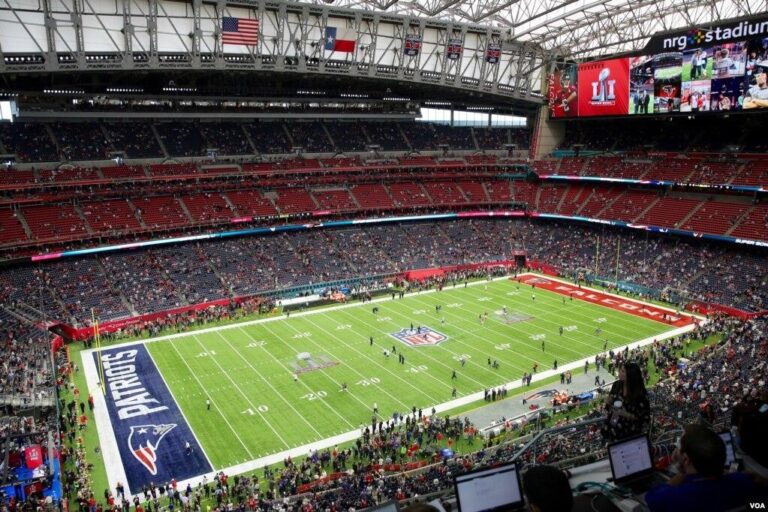Houston’s Sports Venues Face Massive Maintenance Demand Amid Rising Costs
Houston’s flagship sports arenas and stadiums are currently grappling with an overwhelming maintenance backlog, estimated at over $1.4 billion, as reported by the Houston Chronicle. This substantial sum reflects the challenges posed by aging infrastructure and the escalating expenses required to keep these venues safe, modern, and appealing to fans. Hosting a diverse array of events—from NFL and MLB games to international concerts—these facilities are vital to the city’s cultural and economic landscape. However, critical systems such as roofing, HVAC, electrical wiring, and structural elements urgently need upgrades to meet contemporary standards and ensure operational reliability.
Facility managers have outlined a comprehensive plan targeting key areas to enhance safety, sustainability, and fan experience. The prioritized initiatives include:
- Structural upgrades: Reinforcing foundations and seating arrangements to comply with updated safety regulations.
- Energy-efficient improvements: Transitioning to LED lighting and modern HVAC systems to reduce carbon footprint and operational expenses.
- Technological modernization: Enhancing digital scoreboards, Wi-Fi infrastructure, and broadcast capabilities to meet growing technological demands.
| Venue | Projected Maintenance Cost | Primary Focus Area |
|---|---|---|
| NRG Stadium | $530 million | Roof replacement and HVAC overhaul |
| Minute Maid Park | $420 million | Seating modernization and electrical system upgrades |
| Toyota Center | $450 million | Structural reinforcements and technology enhancements |
Economic and Operational Repercussions for Houston’s Sports Teams
The enormous $1.4 billion maintenance requirement is expected to place significant strain on the financial health of Houston’s professional sports franchises. Teams dependent on these venues may need to reallocate budgets, potentially scaling back investments in player acquisitions, community outreach, and other key areas to accommodate rising operational costs. This financial pressure could cascade into increased ticket prices, merchandise costs, and sponsorship negotiations as franchises strive to balance expenses without diminishing fan loyalty.
Operationally, the extensive repair work may lead to temporary venue closures or limited availability, disrupting game schedules and training sessions. Such interruptions could negatively affect revenue streams and complicate logistical planning. Key operational challenges include:
- Reduced venue availability: Downtime for maintenance limiting event scheduling.
- Scheduling conflicts: Necessity to reschedule home games and other events.
- Workforce adjustments: Potential layoffs or reassignment of venue staff.
- Fan experience disruptions: Temporary inconveniences possibly impacting attendance and engagement.
| Operational Factor | Potential Consequence | Proposed Mitigation |
|---|---|---|
| Venue Accessibility | Limited event scheduling capacity | Utilize alternative venues and flexible scheduling |
| Financial Constraints | Reduced budget for player and program investments | Expand sponsorship and partnership opportunities |
| Staffing | Potential workforce reductions or role changes | Implement cross-training and redeployment strategies |
Long-Term Strategies for Financially Sustainable Venue Management
Confronting the daunting $1.4 billion maintenance backlog requires Houston’s sports venues to embrace a diversified and sustainable funding approach. Public-private partnerships (PPPs) emerge as a promising avenue, allowing the city to tap into private investment for immediate capital needs while alleviating taxpayer burden. Additionally, innovative revenue streams such as selling naming rights, introducing tiered premium seating options, and expanding event merchandising can provide consistent funding dedicated to ongoing maintenance and upgrades.
Operational sustainability is equally vital. Incorporating green technologies—like solar energy systems and energy-efficient lighting—can significantly reduce long-term operating costs and align with Houston’s environmental commitments. Moreover, establishing transparent maintenance schedules with regular public reporting will build trust and ensure accountability in fund allocation. The table below outlines key strategies to secure both immediate and future financial stability:
| Strategy | Advantages | Implementation Example |
|---|---|---|
| Public-Private Partnerships | Shared financial risk and expanded capital access | Collaborations with local real estate developers |
| Innovative Revenue Models | Reliable, recurring income streams | Premium seating tiers and exclusive event merchandise |
| Green Technology Integration | Lower operational expenses and environmental impact | Installation of solar panels and LED lighting systems |
| Transparent Reporting | Increased public confidence and oversight | Quarterly updates on maintenance progress and finances |
Economic and Social Gains from Investing in Sports Facility Renovation
Revitalizing Houston’s aging sports infrastructure extends beyond mere preservation—it acts as a powerful engine for economic growth and community enrichment. Upgraded stadiums and arenas attract marquee events that boost tourism, generate thousands of jobs, and stimulate local businesses such as eateries, hotels, and retail shops that thrive on event days. These venues also serve as vital community hubs, fostering neighborhood pride and encouraging youth participation in sports and recreational programs.
In addition to immediate economic benefits, the $1.4 billion investment is expected to:
- Enhance property values in surrounding neighborhoods.
- Increase municipal tax revenues through higher attendance and related spending.
- Promote public-private collaborations that leverage private capital for broader community advantages.
This comprehensive renewal aligns with Houston’s vision of cultivating a dynamic, inclusive sports culture that drives economic vitality while strengthening community bonds.
Conclusion
As Houston’s premier sports venues face an unprecedented $1.4 billion maintenance challenge, the path forward demands strategic collaboration among public officials, team owners, and community stakeholders. Balancing immediate repair needs with sustainable funding and operational efficiency will be crucial to preserving Houston’s status as a leading sports destination. The coming months will be pivotal in shaping how these iconic facilities evolve to meet future demands while continuing to serve as pillars of the city’s cultural and economic life.




